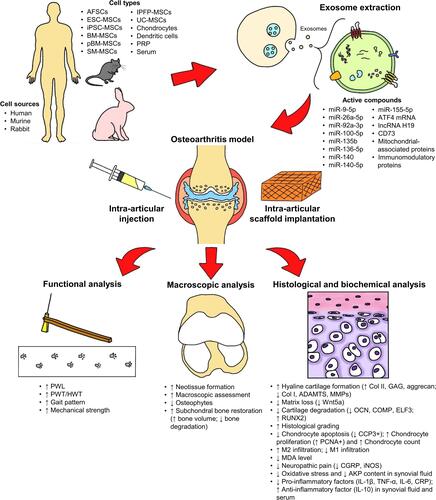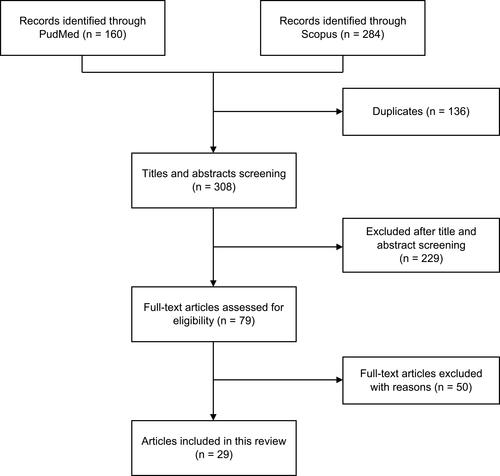Figures & data
Table 1 Summary of Risk of Bias Analysis Using SYRCLE Tool
Table 2 Cell Sources, Exosome Isolation, and Characterization
Table 3 Summary of Efficacy and Safety Findings
Figure 2 Overview of the studies. The exosomes tested in the included studies were derived from human, murine, or rabbit amniotic fluid stem cells (AFSCs), embryonic stem cell-derived mesenchymal stem/stromal cells (ESC-MSCs), induced pluripotent stem cell-derived MSCs (iPSC-MSCs), bone marrow-derived MSCs (BM-MSCs), polydactyly BM-MSCs, synovial membrane-derived MSCs (SM-MSCs), infrapatellar fat pad-derived MSCs (IPFP-MSCs), umbilical cord-derived MSCs (UC-MSCs), chondrocytes, dendritic cells, platelet-rich plasma (PRP), and serum. The exosomes were administrated to the osteoarthritic joint through intra-articular injection or scaffold implantation. The exosomal bioactive compounds played an important role in cartilage and subchondral bone repair and regeneration. Overall, exosome therapy restored joint function, reduced joint pain, and improved the joint macroscopic, histological, and biochemical features.


